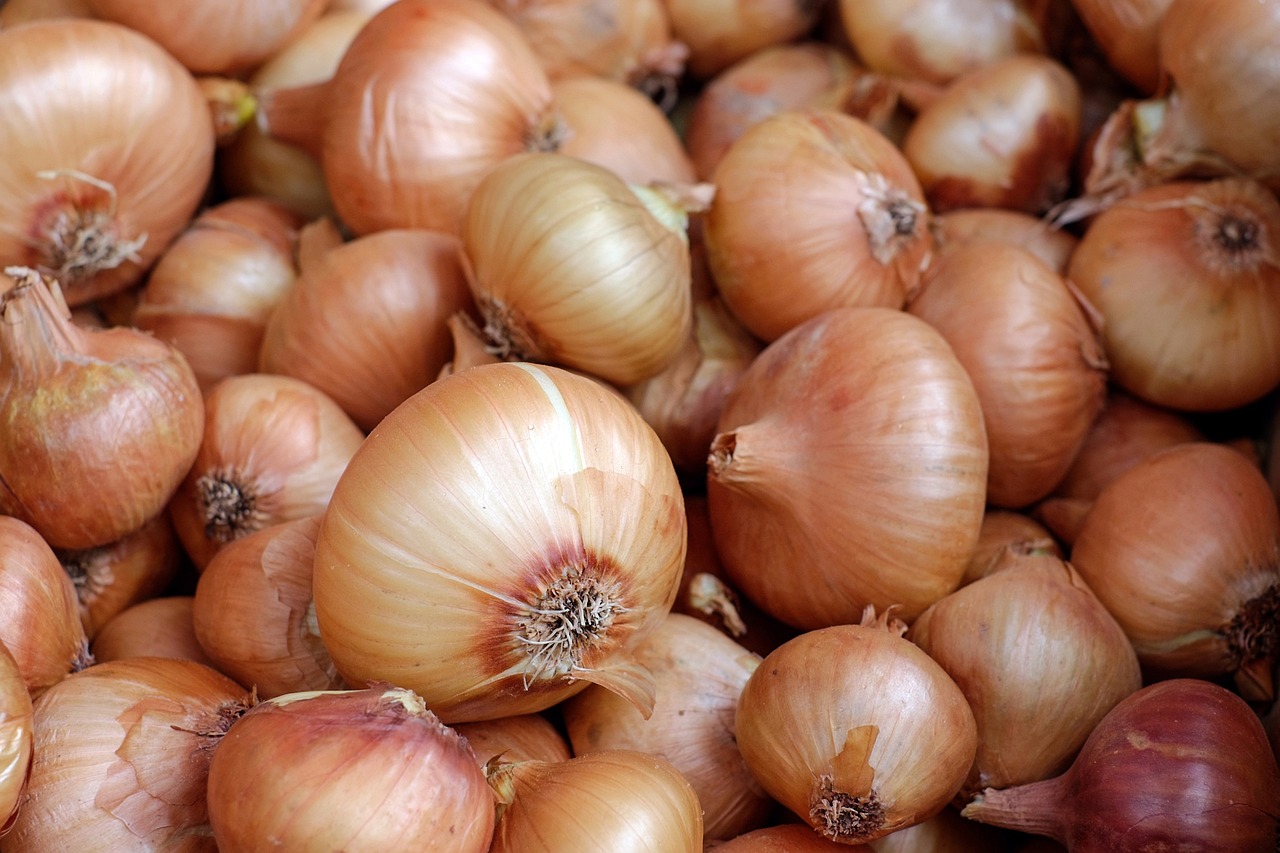Onions are a tried-and-tested household remedy for coughs, earaches and insect bites. What ingredients go into producing wholesome onion juice, and how are onion pouches made?
Onions are considered to be one of the oldest medicinal plants. It probably came to Europe via the Middle East and was originally mainly grown in monastery gardens.
When onions are chopped or peeled, the sulfur-containing compound allicin—an antibacterial agent—is released. It makes our eyes water, has an antibacterial effect and also helps to loosen mucus, making it thinner and easier to cough up.
Ingredients: why onions are healthy
Onions are rich in vitamins B and C, potassium, magnesium and phytochemicals such as mustard oils and quercetin. The vegetable is also said to have numerous other positive effects: onions are said to support the immune system, reduce the risk of heart disease, have a positive effect on digestion and have an antibacterial effect. In addition, onions consist of 90 percent water and are therefore very low in calories, at around 33 calories per 100 grams.
Onion juice for coughs
A tried-and-true home cure for coughs is onion juice. Mix equal parts of chopped onions with honey or sugar, place in the fridge overnight and pour through a sieve the next day. Spooning up the remaining onion juice throughout the day has an expectorant effect.
Onion pouches for earache
Onions can also help with inflammation in the ear. Simply fill a small cloth or a small sock with freshly chopped onions, heat briefly in the microwave or oven and place on the sore ear.
Onions for inflammation after insect bites
Due to their anti-inflammatory properties, onions can also be used to treat insect bites. Therefore, cutting an onion in half, making a small, grid-like incision, and applying the cut surface to the sting site for a few minutes is a straightforward home remedy. Squeeze the onion slightly to allow the juice to come out. This process can be repeated several times.
- source: Ratgeber Gesundheit | NDR.de – Ratgeber – Gesundheit/picture: Bild von Ilo auf Pixabay
This post has already been read 2890 times!



